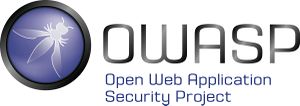This site is the archived OWASP Foundation Wiki and is no longer accepting Account Requests.
To view the new OWASP Foundation website, please visit https://owasp.org
Difference between revisions of "Press"
From OWASP
(→The OWASP Brand) |
|||
| Line 99: | Line 99: | ||
=The OWASP Brand= | =The OWASP Brand= | ||
| + | OWASP's philosophy is that achieving security involves all parts of an organization, including people, process, and technology. We support the use of our brand consistent with this philosophy. However, we cannot allow the use of our brand when it implies something inconsistent with OWASP's comprehensive and balanced approach to application security. Therefore, we have defined these brand usage rules to clarify appropriate and inappropriate uses of the OWASP brand, including our name, domain, logos, project names, and other trademarks. The Brand Guidelines document can be found on the [https://www.owasp.org/index.php/Marketing/Resources#tab=BRAND_GUIDELINES Brand Resources page]. | ||
| + | Below is a copy of the OWASP Logo for official use. More logos can also be found on the Brand Resources page, as well as materials useful for promoting OWASP. | ||
| + | |||
| + | |||
| + | [[Image:Owasp logo.jpg|Owasp logo|300px |center]] | ||
= OWASP News = | = OWASP News = | ||
Revision as of 23:31, 24 August 2014
